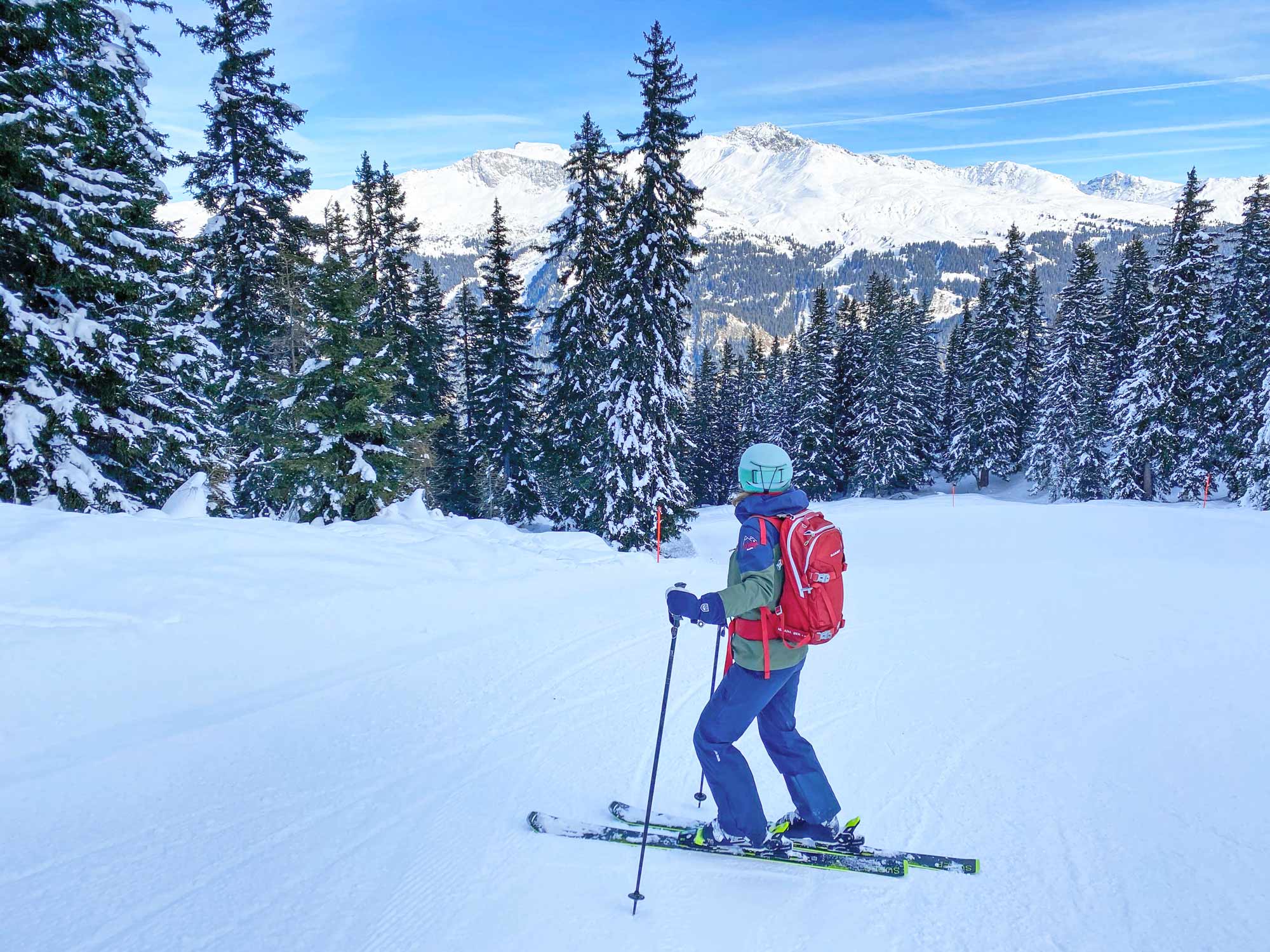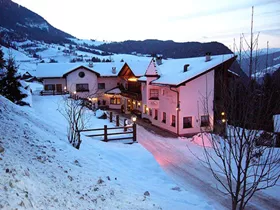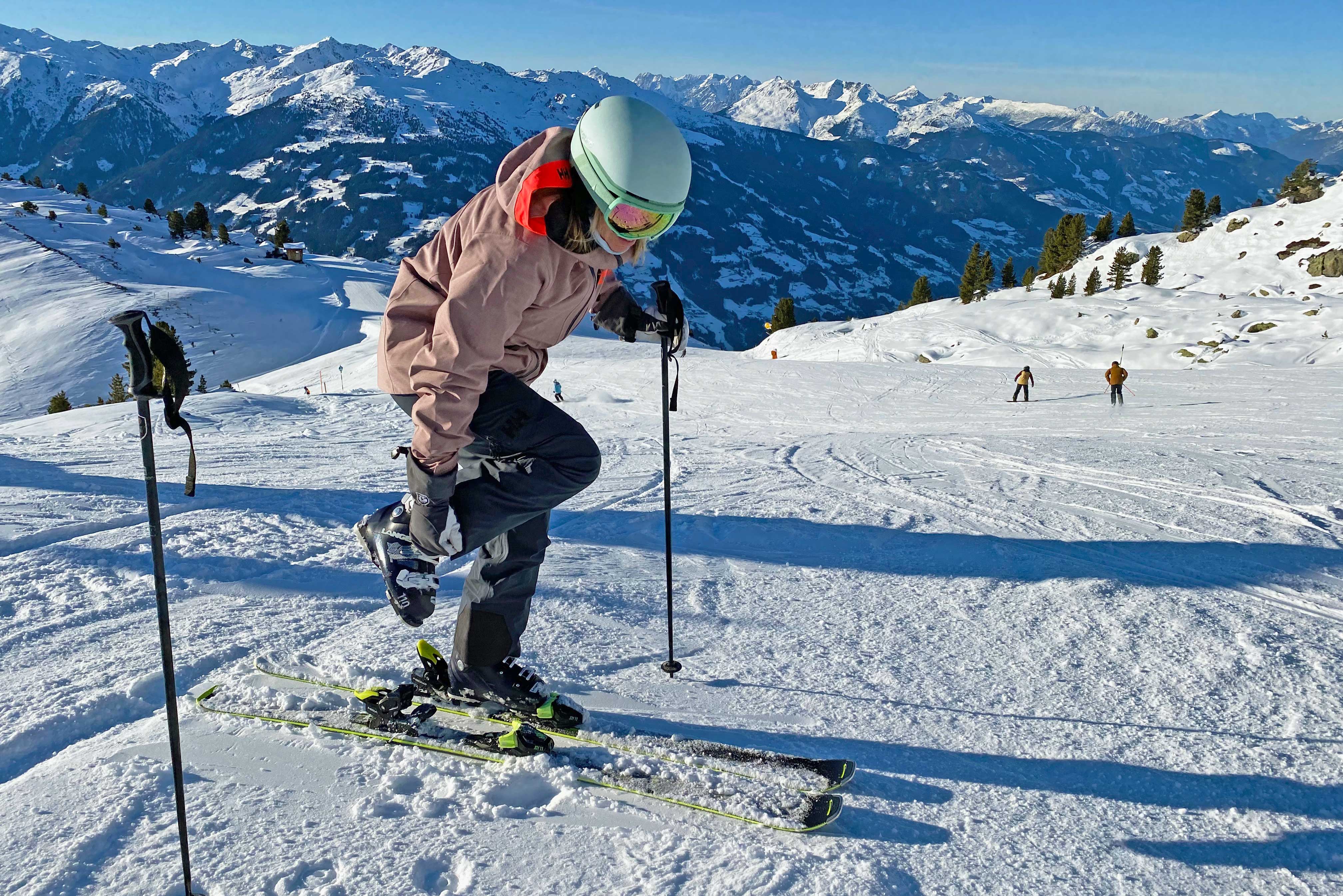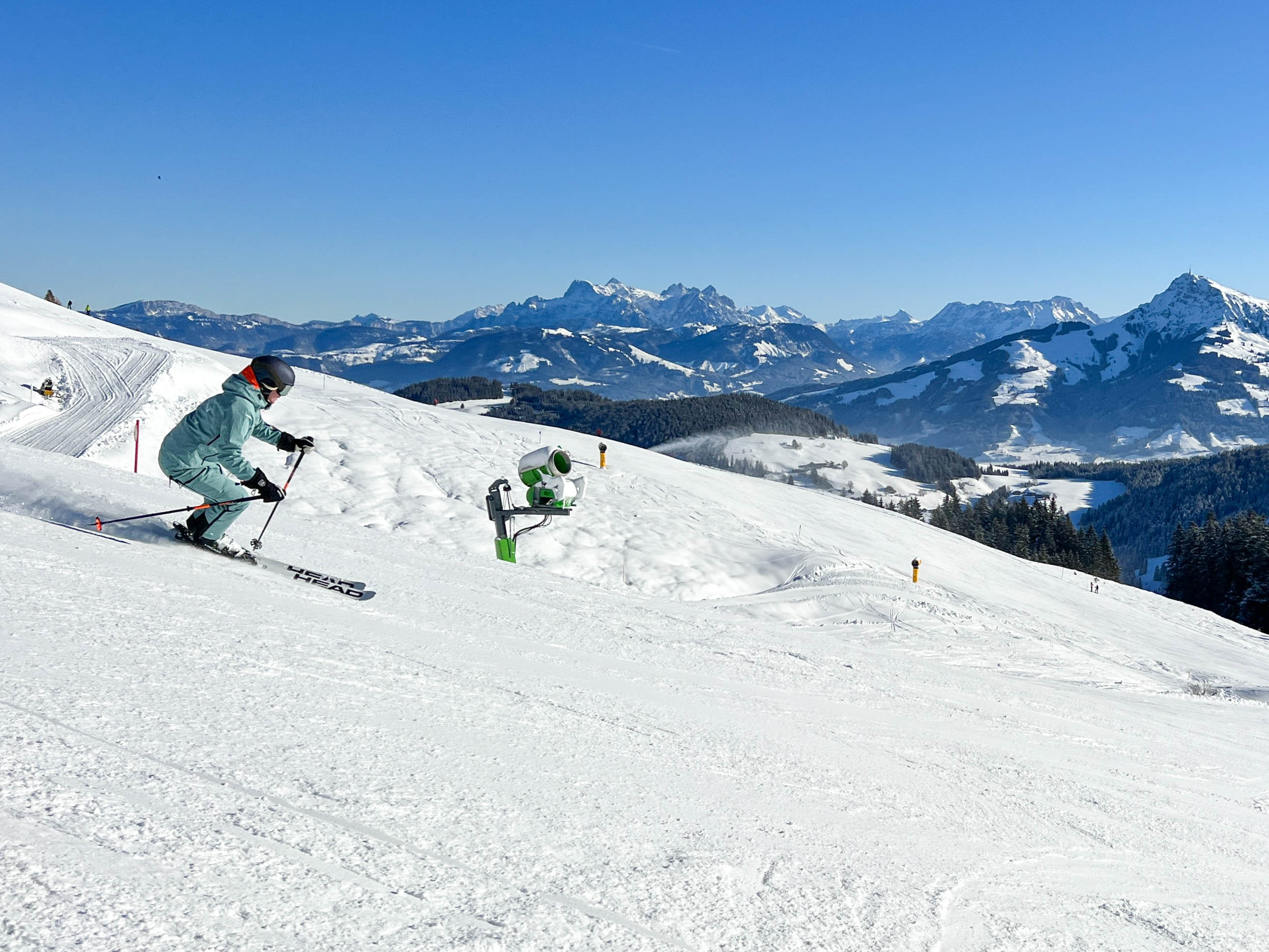
© Sylvain Guiard
We toss around the word ‘gradient’ a lot in the skiing world. But if you’re secretly wondering how exactly that translates to the angles that you used to measure with your protractor, rest assured you’re not alone. There’s a lot of confusion on the subject, especially as you’ll sometimes see slopes measured in degrees and sometimes in percentages – which makes the whole business a little bit like comparing apples and oranges! Should you be awestruck at someone who managed to ski a 45° piste? Will you impress your mates after skiing a groomed piste with a gradient of 60%? Here’s a little guide so you can boast properly about that wicked run you just killed.
Gradient vs. Degrees: How to measure the steepness of a ski piste
What’s the difference between gradient and degrees? The short answer is that we get the gradient of a piste by dividing the degree by 45. So, a 45° piste would have a gradient of 100% – and yes, you can definitely brag about that! The Harakiri in Mayrhofen is famous for having a gradient of 78% in its steepest part. Is there a super-easy way to figure out the degree of the slope working backwards from the gradient? Not exactly (it involves cross-multiplying), but you can get an idea by dividing the gradient by 2. This would suggest that the Harakiri measures 39°, when in fact it measures 35° – not that far off. It’s much easier to figure out the gradient of a slope using the degree as a starting point, since all you have to do is divide the degree of steepness by 45.
La Chavanette, aka The Swiss Wall © Champery
So, how steep is steep?
Luckily, most slopes that you’ll find in ski resorts will be less than 45°. It’s generally agreed that a slope is steep when it measures above 30°, or 66%. Of course, a slope consisting of deep powder will be much less intimidating than a hard, icy slope of the same steepness. You’ll rarely find pisted slopes above 36° (80%), because it’s very difficult for a piste basher to exert enough pressure to pat the snow down at that angle. This is the off-piste realm, where daredevil skiers might tackle extremely steep slopes above 45°. Avalanches are most likely to happen between 35° and 45°, which is when conditions are perfect: not so steep that snow isn’t able to build up, but steep enough that it can all quite happily come tumbling down. Some pro freeriders tackle slopes higher than 60°, but when it gets too steep, the snow has a hard time sticking at all.
Some of the most popular steep slopes in Europe compared
| Ski piste | Max. degree | Max. gradient | |
|---|---|---|---|
| Harakiri |
35°
|
78% | |
| Streif |
38°
|
85% | |
| Kandahar |
41°
|
92% | |
| Vars World Cup Piste |
44°
|
98% | |
| Swiss Wall |
45°
|
100% |
How to ski those insanely steep slopes
Whether you’re skiing on sheer ice, powder or moguls, down a wide bowl or a narrow couloir, skiing steeps requires an above-average level of skiing (or snowboarding) and excellent acquaintance with your poles and your centre of gravity. If you’re a good skier but have yet to tackle this level of gradient, try practising your short turns on a flatter slope first. When things get really steep, each turn will require you to enter briefly into freefall. You’d better be ace at stopping or you’ll find yourself tumbling down the hill. Helmet strongly recommended!
Conclusion: So, am I allowed to boast?
You’ll hear a lot of so-called extreme skiers belittling slopes that advertise a pitch of 40°. These people will go on to boast that they recently skied a piste with a 70% gradient. But in fact, 40° works out to a gradient of 89% – so be careful next time you start throwing numbers around! It seems crazy, but that pitch that seems almost vertical in your mind’s eye might actually only measure about 35°. Which, of course, is a gradient of 78%. Confused yet?
Still brave enough to try tackling those steep pistes? Check out some of Europe's best black pistes
© Sylvain Guiard
We toss around the word ‘gradient’ a lot in the skiing world. But if you’re secretly wondering how exactly that translates to the angles that you used to measure with your protractor, rest assured you’re not alone. There’s a lot of confusion on the subject, especially as you’ll sometimes see slopes measured in degrees and sometimes in percentages – which makes the whole business a little bit like comparing apples and oranges! Should you be awestruck at someone who managed to ski a 45° piste? Will you impress your mates after skiing a groomed piste with a gradient of 60%? Here’s a little guide so you can boast properly about that wicked run you just killed.
Gradient vs. Degrees: How to measure the steepness of a ski piste
What’s the difference between gradient and degrees? The short answer is that we get the gradient of a piste by dividing the degree by 45. So, a 45° piste would have a gradient of 100% – and yes, you can definitely brag about that! The Harakiri in Mayrhofen is famous for having a gradient of 78% in its steepest part. Is there a super-easy way to figure out the degree of the slope working backwards from the gradient? Not exactly (it involves cross-multiplying), but you can get an idea by dividing the gradient by 2. This would suggest that the Harakiri measures 39°, when in fact it measures 35° – not that far off. It’s much easier to figure out the gradient of a slope using the degree as a starting point, since all you have to do is divide the degree of steepness by 45.
La Chavanette, aka The Swiss Wall © Champery
So, how steep is steep?
Luckily, most slopes that you’ll find in ski resorts will be less than 45°. It’s generally agreed that a slope is steep when it measures above 30°, or 66%. Of course, a slope consisting of deep powder will be much less intimidating than a hard, icy slope of the same steepness. You’ll rarely find pisted slopes above 36° (80%), because it’s very difficult for a piste basher to exert enough pressure to pat the snow down at that angle. This is the off-piste realm, where daredevil skiers might tackle extremely steep slopes above 45°. Avalanches are most likely to happen between 35° and 45°, which is when conditions are perfect: not so steep that snow isn’t able to build up, but steep enough that it can all quite happily come tumbling down. Some pro freeriders tackle slopes higher than 60°, but when it gets too steep, the snow has a hard time sticking at all.
Some of the most popular steep slopes in Europe compared
| Ski piste | Max. degree | Max. gradient | |
|---|---|---|---|
| Harakiri |
35°
|
78% | |
| Streif |
38°
|
85% | |
| Kandahar |
41°
|
92% | |
| Vars World Cup Piste |
44°
|
98% | |
| Swiss Wall |
45°
|
100% |
How to ski those insanely steep slopes
Whether you’re skiing on sheer ice, powder or moguls, down a wide bowl or a narrow couloir, skiing steeps requires an above-average level of skiing (or snowboarding) and excellent acquaintance with your poles and your centre of gravity. If you’re a good skier but have yet to tackle this level of gradient, try practising your short turns on a flatter slope first. When things get really steep, each turn will require you to enter briefly into freefall. You’d better be ace at stopping or you’ll find yourself tumbling down the hill. Helmet strongly recommended!
Conclusion: So, am I allowed to boast?
You’ll hear a lot of so-called extreme skiers belittling slopes that advertise a pitch of 40°. These people will go on to boast that they recently skied a piste with a 70% gradient. But in fact, 40° works out to a gradient of 89% – so be careful next time you start throwing numbers around! It seems crazy, but that pitch that seems almost vertical in your mind’s eye might actually only measure about 35°. Which, of course, is a gradient of 78%. Confused yet?
Still brave enough to try tackling those steep pistes? Check out some of Europe's best black pistes














